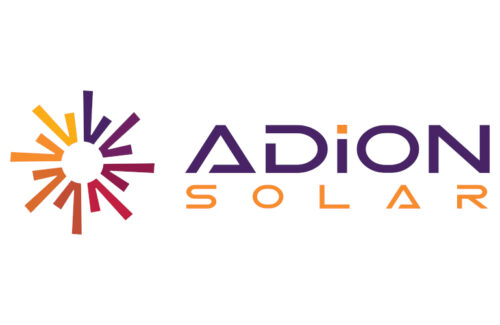A brand-new company plans to open a 500-MW solar panel assembly factory in Madison, Georgia, in fall 2023. Adion Solar told Solar Power World it began exploring options to start a facility before manufacturing tax credits were included in the Inflation Reduction Act, intending to supply the commercial market. Everything is still on track for a 2023 opening, with official product releases determined once the Treasury Dept. provides more details on tax credit distribution, said Philip Devlin, part of Adion’s management team.
“Our goal prior to IRA was to make the [solar] process more affordable for people,” Devlin said. “Our goal is to not just be in the business, but to try and make a change. We want to be able to get [panels] to end users at a reasonable price.”
 Adion Solar is a spin-off of B.I. Production Works, an equipment leasing company serving the film industry, located about an hour east of Atlanta. B.I. rents out work vehicles and talent trailers, and it recently began offering solar-powered options that also come with energy storage. The company says it is the only trailer company offering 100% solar setups, which is a significant alternative for the diesel-prone film industry.
Adion Solar is a spin-off of B.I. Production Works, an equipment leasing company serving the film industry, located about an hour east of Atlanta. B.I. rents out work vehicles and talent trailers, and it recently began offering solar-powered options that also come with energy storage. The company says it is the only trailer company offering 100% solar setups, which is a significant alternative for the diesel-prone film industry.
The initial idea for Adion Solar was to make solar panels specifically for its growing fleet of sustainable work vehicles, but then it expanded into assembling solar panels for more traditional applications.
While Adion and its sister company B.I. have experience in business dealings, Devlin said they do understand the need to bring in executives familiar with solar.
“Certainly, we recognize that we’re going to have to get some industry subject matter experts as we go forward,” Devlin said. “It’s just a matter of timing as we build this out.”
 Adion has purchased equipment from Italian assembly line manufacturer Ecoprogetti and expects to move into its new-build factory in late summer 2023. The factory will initially have a 500-MW annual capacity with the room to grow to 1 GW. Adion is planning on manufacturing a mix of mono- and bifacial solar panels, all focused on the commercial market and potentially the utility-scale market.
Adion has purchased equipment from Italian assembly line manufacturer Ecoprogetti and expects to move into its new-build factory in late summer 2023. The factory will initially have a 500-MW annual capacity with the room to grow to 1 GW. Adion is planning on manufacturing a mix of mono- and bifacial solar panels, all focused on the commercial market and potentially the utility-scale market.
“Where it makes sense to go bifacial, certainly, we would be encouraging the customer base to go that way,” Devlin said. “But we’re going to be taking the lead from the customers, guiding us to fulfilling their needs.”
Adion Solar is currently distributing 540-W Rayzon solar panels from India in the United States until the U.S. facility begins production. The group is using those Rayzon panels on its B.I. trailers in the meantime, too. But the American-made Adion Solar panels will use its own tech while a relationship with Rayzon will continue.
“We want to be leading, but we don’t want to be cutting-edge. We recognize that there are costs associated with that. We want to take proven technologies and make them available,” Devlin said.





ADION Solar may do well in the commercial solar PV panel market, but since “new technology” (C3) is coming, they may still lose out to entities like Trina Solar, Longi on the price per panel in large manufacturing contracts of 100,000 to 1,000,000 solar PV panels per manufacturing run. The commercial market is starting to become more populated with large commercial and utility solar PV panels, someone’s going to have to lose sooner or later. Protectionism is not going to insure U.S. manufactured solar PV panels will survive Chinese and technology reductions in solar PV cell prices and solar PV panel assembly costs overall. Spray on band gap tuned Perovskites as cheap tandem solar PV panels with 30% or more solar harvest efficiency. May become the only threat to Chinese solar PV panel supremacy World wide. Cut out a chunk of the energy needed to get polysilicon from the foundry, go to the manufacturing that does the crystal pulling, cutting into wafers, in some cases laser annealing, doping wafers and then assembling the wafers into solar cells for a panel. Cut out all of the foundry work and spray on Perovskites made with nano-Perovskites to grab more of the light spectrum to create more power per square meter from each panel. There are levorotatory and dextrorotatory chemical derivatives that could be laid out to capture more light for power conversion. Having a spray on process on glass and using two glass sheets then fusing the edges from air and moisture becoming entrained could be the magic bullet to leaving energy intensive crystalline solar PV cells and panels behind. I believe First Solar has a process similar to this where it manufactures their CdTe solar PV panels using spray on techniques and fusing glass sheets to make their frameless solar PV panels now. This is how the U.S. beats China in cost and efficiency in the solar PV panel market World wide.